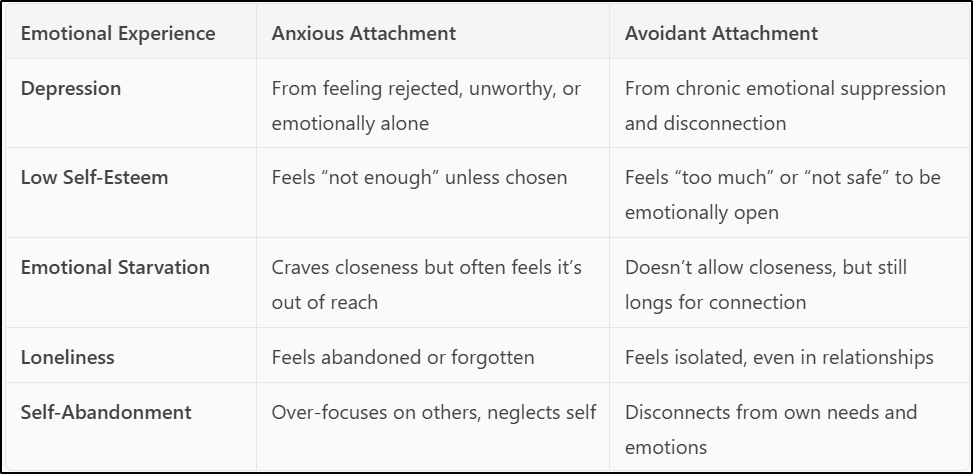The anxious-preoccupied attachment style is one of the three insecure attachment styles, often referred to as “love styles.” It typically develops in response to inconsistent caregiving during childhood. This inconsistency can take many forms – for example, one parent may be emotionally attuned and loving, while the other is distant or unavailable. Or both parents may be caring but frequently absent due to work or other responsibilities. In more intense cases, there may be actual abandonment, such as a parent leaving the home or a prolonged separation due to divorce. Regardless of the specifics, the child experiences a pattern of emotional unpredictability, which can feel like abandonment – whether real or perceived.
Because children are entirely dependent on their caregivers for survival, this emotional inconsistency triggers a fight-or-flight response. The child learns to associate connection and approval with safety, and disconnection with danger. Over time, this creates a deep emotional imprint: the fear of losing connection becomes intertwined with the fear of not surviving.
Once this emotional imprint is formed, it becomes part of the child’s subconscious programming – shaping how they perceive and respond to relationships later in life. This subconscious lens filters their experiences, often causing them to interpret emotional distance or inconsistency as a threat, even when it may not be. In essence, the anxious-preoccupied individual begins to view relationships through a survival-based framework, where connection equals safety and disconnection equals danger.
In adulthood, this subconscious programming resurfaces in romantic relationships. The romantic partner becomes the new primary attachment figure, and any perceived emotional distance or withdrawal can activate the same survival-level response – a trauma reaction rooted in early childhood. Even subtle signs of inconsistency or unavailability can feel overwhelming, triggering panic, anxiety, or emotional dysregulation.
This is why anxious-preoccupied individuals often appear needy, clingy, or overly focused on the relationship. They may call a lot, seek constant reassurance, or try to accelerate commitment – not out of manipulation, but as a way to soothe the deep fear of abandonment. These behaviors are coping mechanisms, attempts to avoid reliving the emotional pain and uncertainty they experienced as children.
Sources:
- DO THIS To Heal Your Anxious Attachment Style FAST | Thais Gibson – Personal Development School: YouTube



